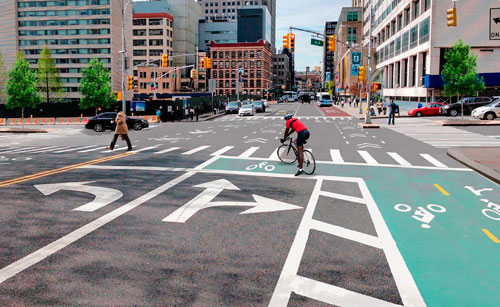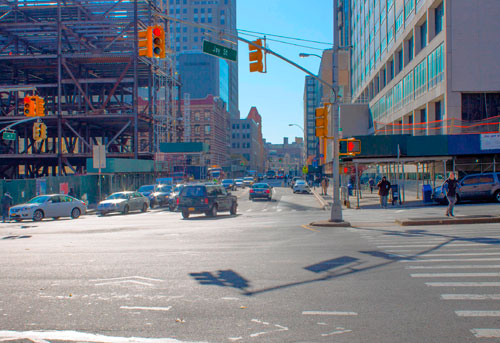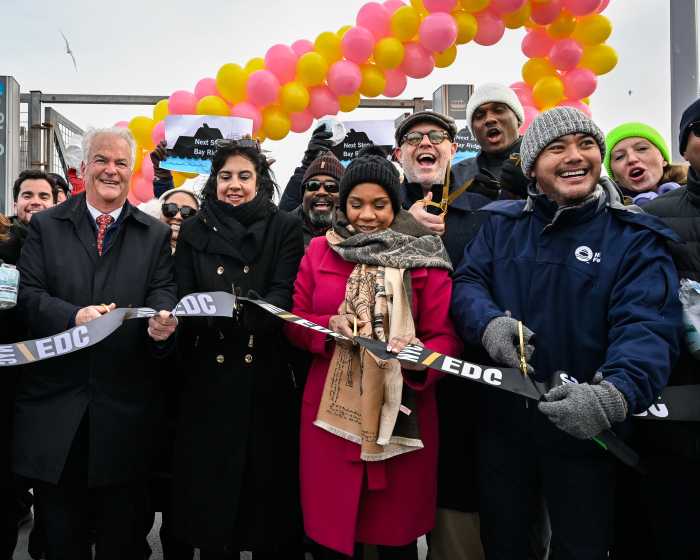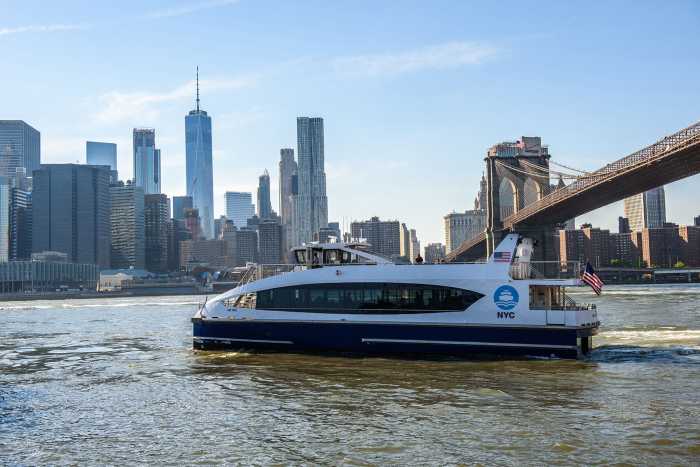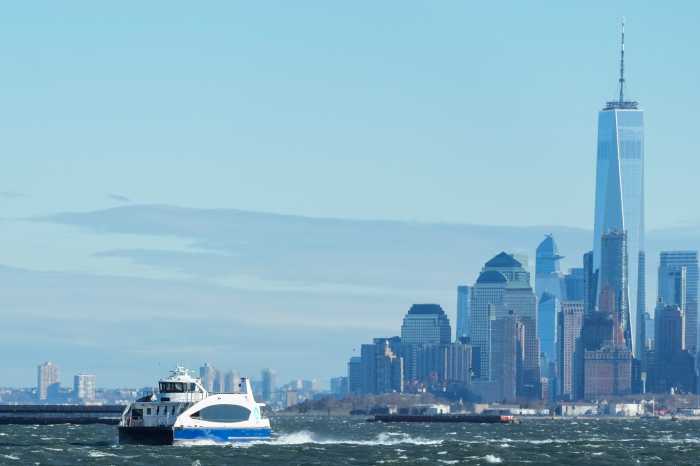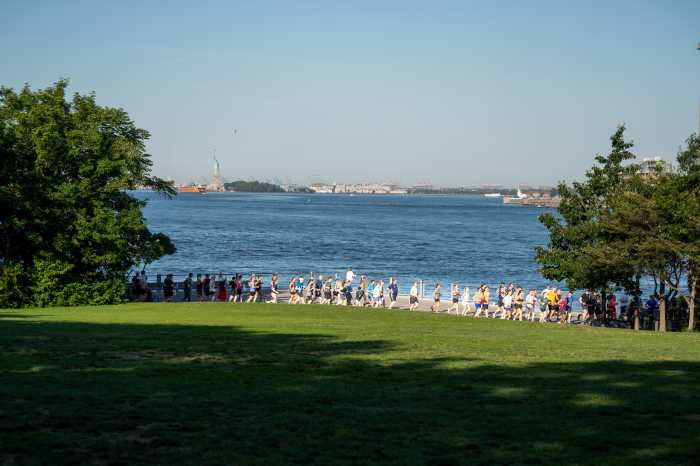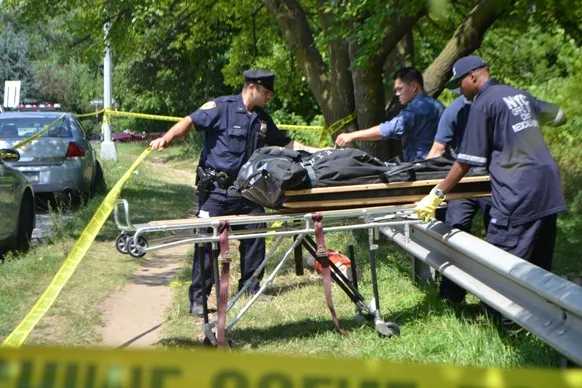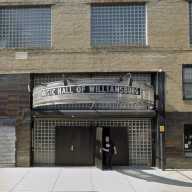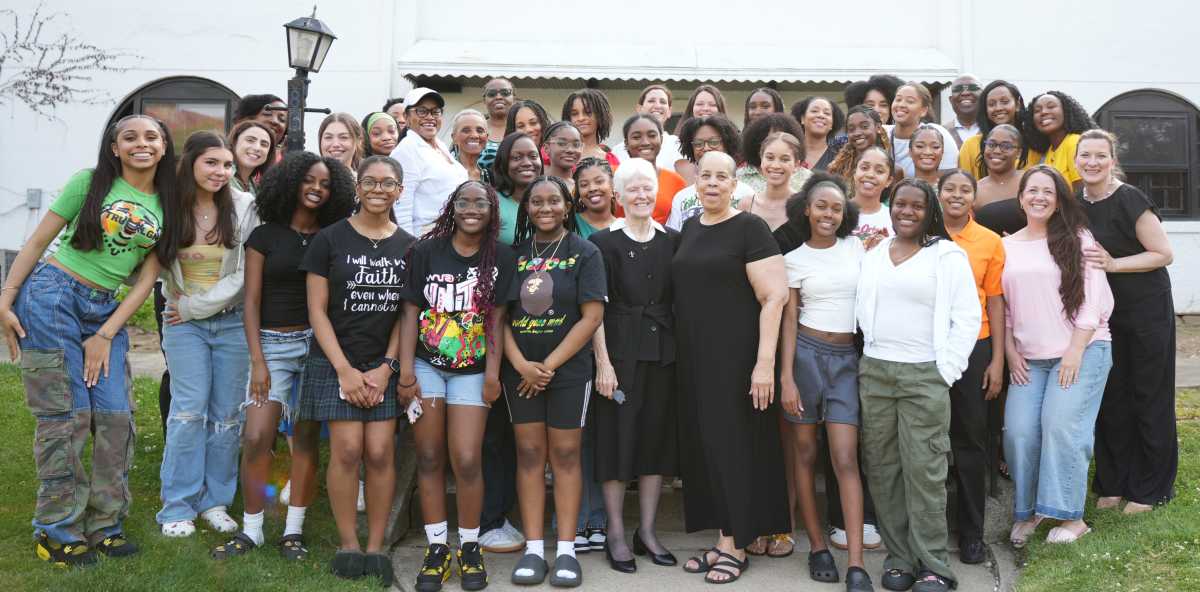Brooklyn’s hairiest roadway for cyclists needs more signs, longer pedestrian crossing times, a two-way bike path, and a shelter area for pedestrians caught in the middle of Tillary Street, according to road-safety activists.
Jay Street, which readers of this paper voted as having the scariest bike lane in Brooklyn in 2012, is still a mess, despite a recent repaving and subsequent new paint job, the car-critic group Transportation Alternatives charges. The 17-block thoroughfare was the site of 75 crashes this year, city records show, and the group is now pushing for an overhaul that it says will make the street safer. Somebody certainly needs to do something to address the chaos, the administrator of a local community board said.
“Pretty much everybody who uses Jay Street is guilty of one infraction or another,” said Community Board 2 district manager Robert Perris. “Anything that can bring order to Jay Street would most likely be welcome to all users.”
The two single-direction bike lanes on either side of the street should be combined into a single bike highway in the center of the street, and parking should be expanded for cyclists and taken away from drivers, per the Transportation Alternatives report, released late last month. Centralizing the bike lanes, and creating a new dedicated bus lane, would cut down on buses crossing cyclists’ paths, which now happens constantly. Also, to make the street safe for the office workers, high schoolers, and residents constantly crossing it, red lights need to last longer, and there needs to be more of a pedestrian island in the middle of busy Tillary Street instead of the thin concrete strip that is currently there, the advocates say.
Dramatically changing the layout of streets such as Jay Street and Atlantic Avenue is something that has to happen if Mayor DeBlasio’s Vision Zero push to reduce traffic deaths to zero by 2024 is going to succeed, an organizer with the group said.
“If we are going to talk about making our neighborhood and communities safer, we have to push for a complete redesign of the most dangerous streets,” Luke Ohlson said.
Changing the physical landscape only goes so far on a street plagued by double-parking, jaywalking, reckless cycling, and illegal U-turns, and, the report says, the overhaul must be accompanied by ramped-up traffic and parking enforcement to be effective.
The recommendations came out of a series of brainstorming sessions and group strolls along problem streets.
“It’s been a painstaking process, but it definitely feels like momentum is building in many quarters,” said Eric McClure, a Transportation Alternatives volunteer and longtime road-safety activist.
The next step is convincing the Department of Transportation to take a look at a Jay Street redesign. The agency did not respond to comment requests.
Borough President Adams’s office said he hasn’t had a chance to figure out how he feels about the report’s recommendations. Jay Street got its current bike lanes in 2008.
